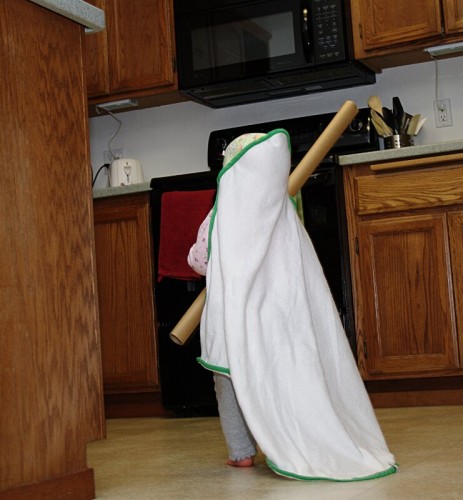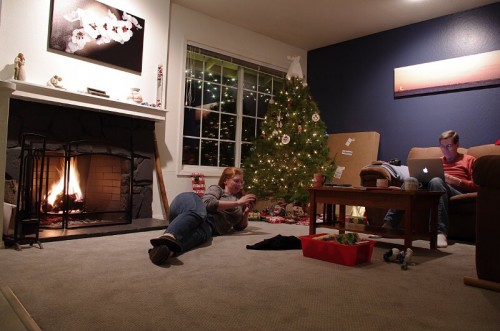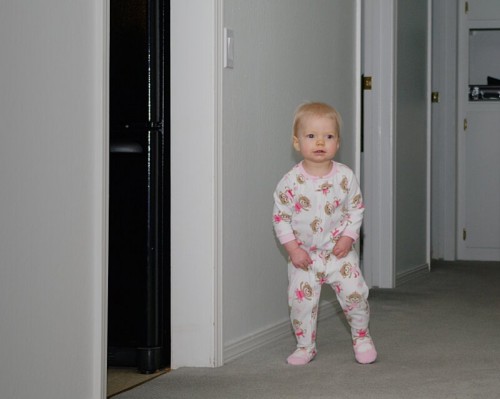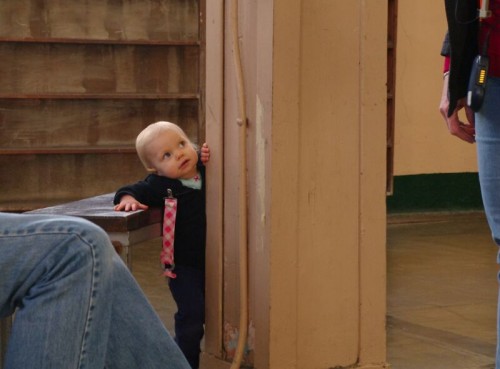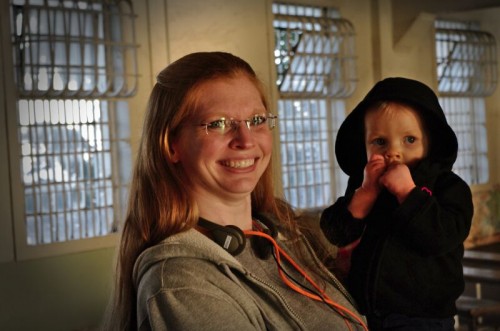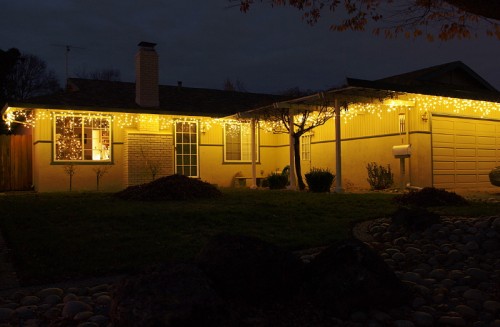Heather rather enjoys getting various things on her head and walking around with them there. Here is her majesty with a cloak and staff:
Jess’ parents came to visit for Christmas. Christmas Eve was a relaxing evening of snacks and enjoying the fire. There was wassail and cocktail weenies as required by Dickerson tradition.
During the night, Santa came to visit and filled the stockings and such.
Heather received a wagon in which her favorite stuffed animals waited for her to get up. Despite the tag with her name on it, she was still a little unsure of the situation. But she warmed up to the idea fairly quickly.
Heather loved the library. We had to finally carry her away in order to finish the tour.
And here are just some nice pictures:

